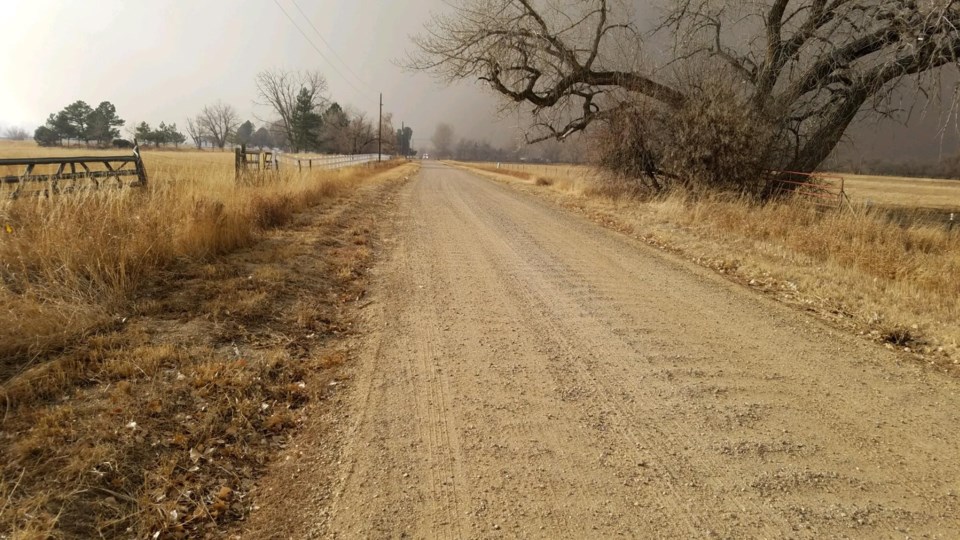Emergency responders are hoping to improve communication with each other and the public after reviewing the response to the Marshall fire.
This week, the agencies involved in the Marshall fire released an After Action Review, a typical practice following disasters where responders evaluate what happened and why, and how to build on strengths and work on weaknesses. The ultimate goal of After Action Reviews is to improve response to future disasters.
The Marshall fire broke out south of Boulder on Dec. 30 amid persistent and extremely high winds focused close to the base of the foothills. It ultimately destroyed 1,084 homes and seven commercial structures, damaging another 149 homes and 30 commercial structures.
One aspect emphasized in the report was the fact that nothing could be done to stop the spread of the fire under such conditions. Instead, there was an emphasis on improving evacuation efforts and streamlining processes between agencies.
“(We) need to prepare for fires on high wind days whether we meet red flag parameters or not,” the report said.
At 10:15 a.m. Dec. 30, before the Marshall fire broke out, Boulder County agencies were responding to the Middle Fork fire north of Boulder. That fire saw rapid growth, attracting multiple fire departments and sheriff’s office deputies to evacuate residents.
As responders tried to get the Middle Fork fire under control, the Marshall fire was dispatched at 11:05 a.m. and began consuming structures almost immediately. Resources were redirected from the Middle Fork fire.
With wind reaching 100 mph, firefighters struggled to stand up straight or open vehicle doors and visibility was near zero at times.
“The fire was spreading in other areas, but the spread initially was not detected because the wind was causing a tremendous amount of smoke, dirt, dust and debris that concealed the fire’s growth and direction,” the report said.
Evacuations were called for immediately and a door-to-door evacuation process took place in the immediate vicinity of the fire. It progressed quickly toward Superior and the large commercial area around Costco and Target, which is when it became apparent to responders that the fire would impact Superior and likely Louisville.
By 12:41 p.m., the report said that the 911 center was “overwhelmed” with calls. By 12:50, the decision was made to evacuate the entire town of Superior. The town was evacuated by 3:30 and at 3:37, a SWAT team was assigned to assist Louisville with its evacuation.
Louisville fire and police noted in their section of the report that the decision was made to not evacuate all areas within the city immediately, but rather in phases to limit traffic congestion. The report said that the city’s roadways did not have the capacity for a city-wide evacuation.
“An earlier shift from firefighting to mass evacuations could have provided homeowners more time,” the report said. “However, with the fire jumping and not knowing the extent of each individual fire, firefighters were challenged in knowing where to evacuate first.”
The fire continued its rampage until later in the evening, when the winds calmed down. The next day, temperatures dropped and a snowstorm helped to put out the fire. While over 1,100 homes and businesses were lost in the fire, the report notes that thousands more homes were saved because of firefighting efforts.
Two people died in the fire, one in the Marshall area and one in Superior. According to the report, both people had been contacted by law enforcement and advised to leave.
“The loss of life in any disaster is hard to accept, and tragically two people did lose their lives,” the report said. “Due to the speed of the fire spreading into multiple communities simultaneously, the potential for many fatalities was present and fortunately did not manifest during this incident.”
Evacuation procedures were noted as one of the weaknesses in the fire response. That in part was due to the nature of the situation.
“The fire was moving faster than some of the evacuation orders could be developed and launched,” the report said. “... The evacuation of 37,500 people during a fast moving and multi-directional spreading fire in a relatively short period of time (3-4 hours) is unprecedented.”
The report notes that during the fire, the Division of Homeland Security and Emergency Management suggested that they launch a wireless emergency alert, which targets cell phones in broad geographic areas, but it was not acted on because there was no prior planning or ability to integrate it with geotargeted evacuation zones. The report recommends developing and implementing this capability.
One change that has already been made is integrating wireless emergency alerts into 911 centers so that evacuation orders can be issued during imminent or immediate risk to life.
Another improvement currently in progress is the development of evacuation polygons for Boulder County communities, including in Longmont. Evacuation planning meetings and tabletop exercises with local municipalities are underway to assist with the development of these polygons and processes.
In Louisville, the city is looking at alternative evacuation routes and the associated traffic congestion impacts to strengthen their evacuation plan.
There was also confusion about delegation of responsibilities and communication breakdowns as a number of agencies navigated the crisis. The report noted that there was at times a disconnect between law enforcement and firefighters.
“Dispatch would get differing requests from fire or law resources,” the report said, recommending escalating exercises with an emphasis on process development to prevent this from happening again.
One improvement recommended by the plan is to work on processes and training for quickly escalating crises to be more efficient, along with establishing decision-making agreements ahead of time. Another plan is to structure a model for responding to fires that start in wildland or grassland areas and move into an urban structure environment, to help prepare for this type of situation in the future.



